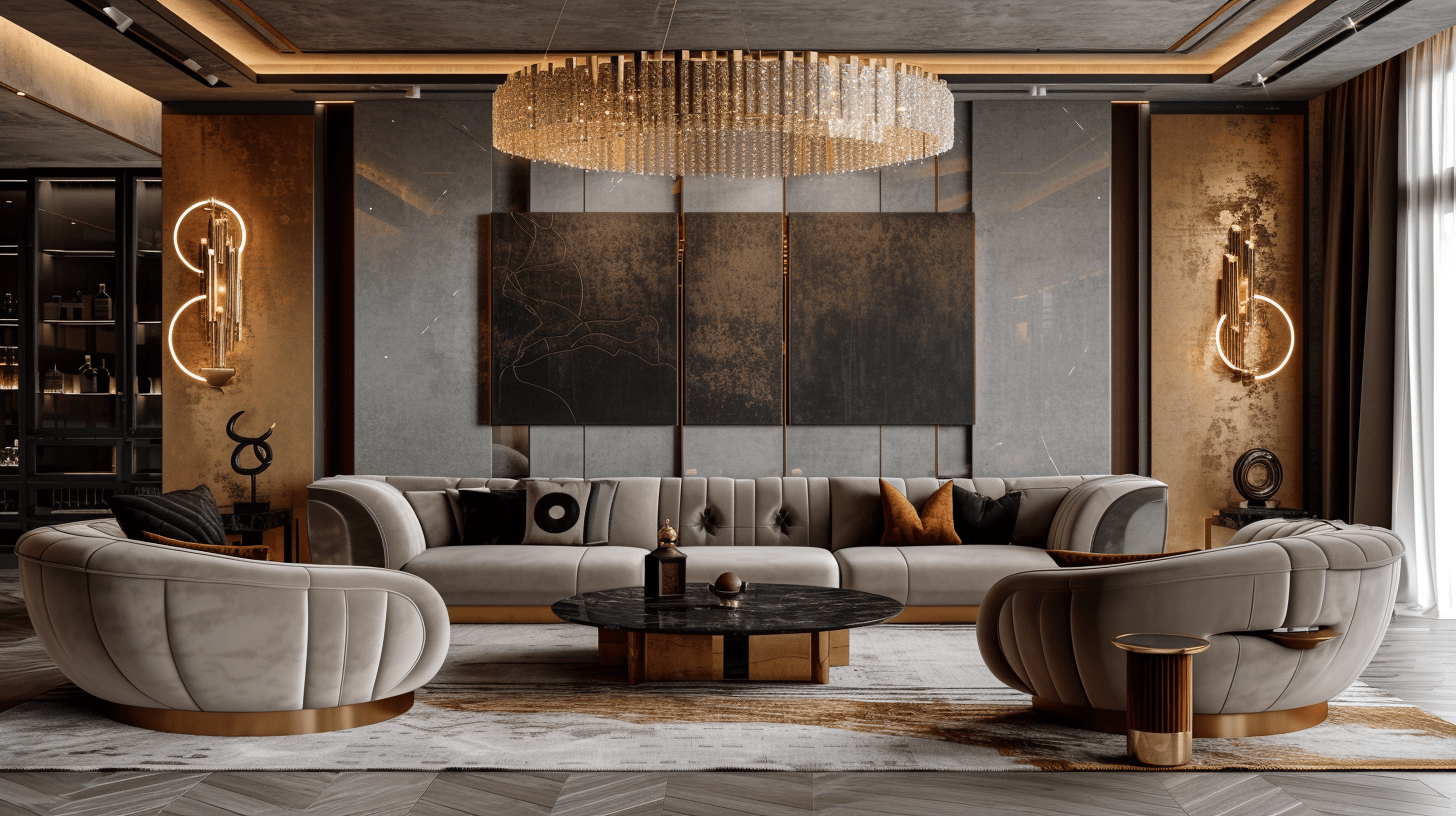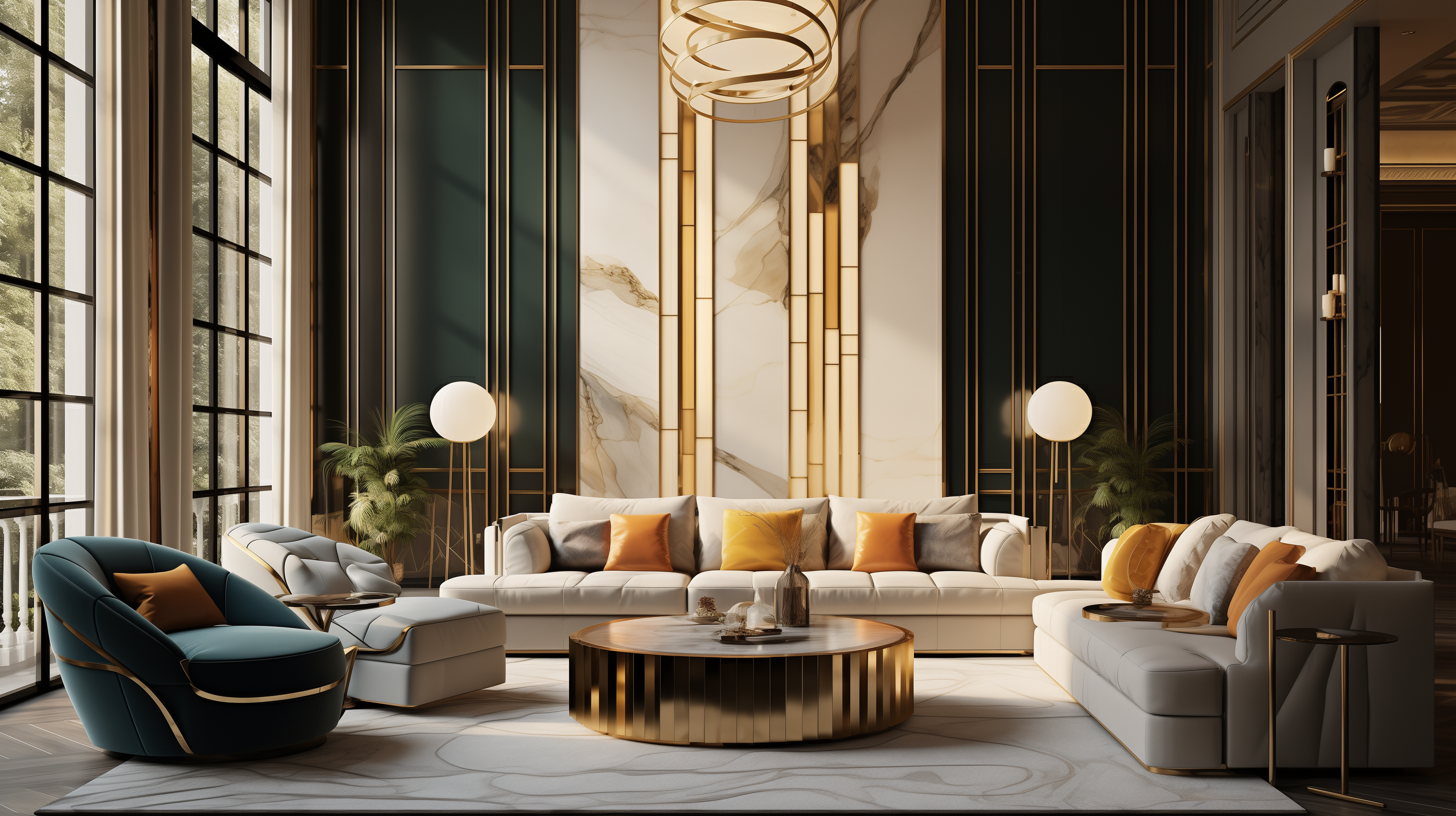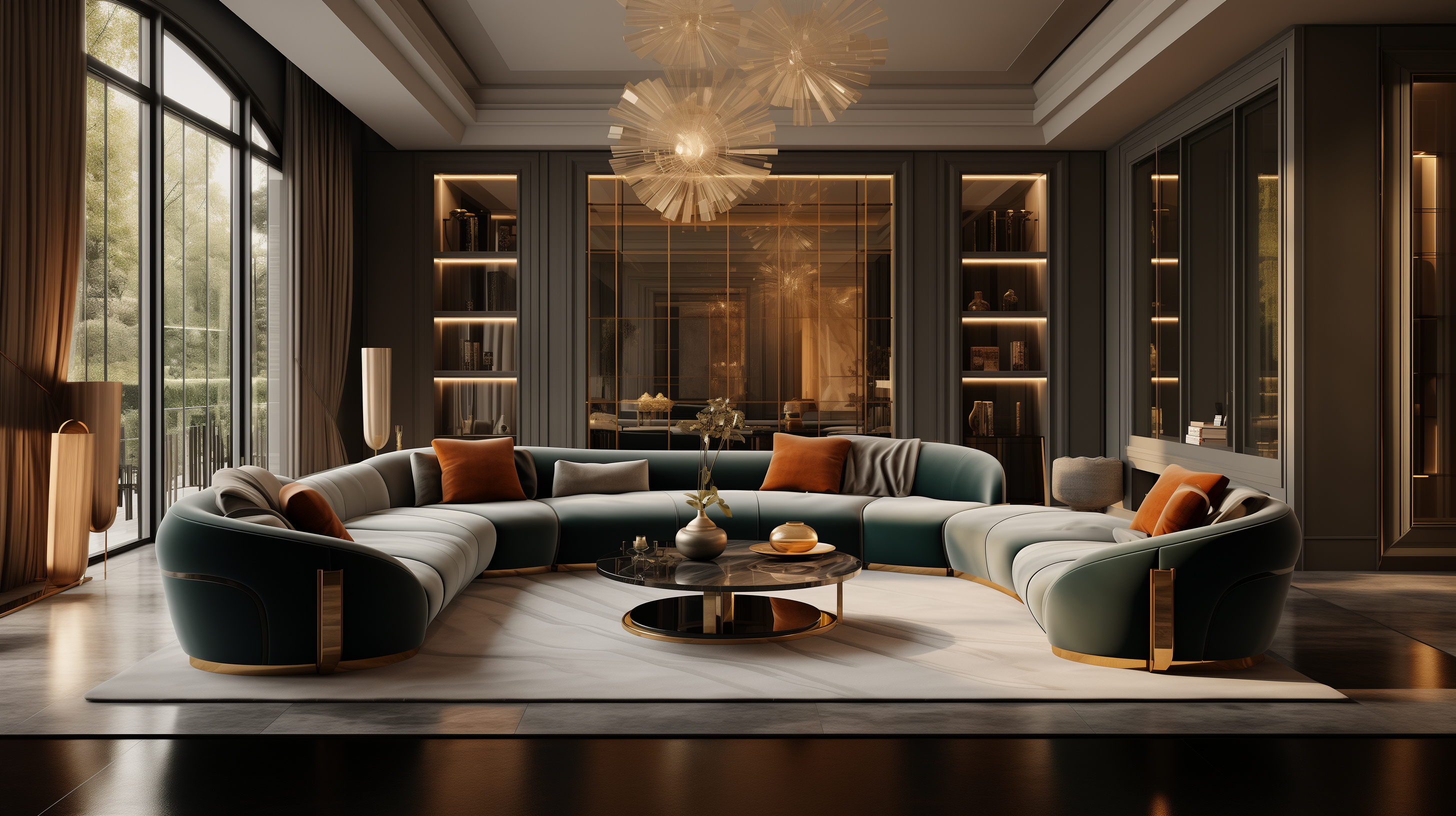Art Deco
Art Deco: A Comprehensive Exploration of an Iconic Design Movement
Introduction to Art Deco
Art Deco stands as one of the most influential and enduring design movements of the 20th century. Originating in the interwar period of the 1920s and 1930s, Art Deco captivated the world with its bold aesthetic, innovative craftsmanship, and celebration of modernity. From architecture and interior design to fashion and visual arts, Art Deco permeated every facet of cultural expression, leaving an indelible mark on the collective imagination. In this comprehensive exploration, we delve into the origins, characteristics, influences, and lasting legacy of the Art Deco movement.
Origins and Influences
The term “Art Deco” derives from the 1925 Exposition Internationale des Arts Décoratifs et Industriels Modernes held in Paris, which showcased the latest trends in decorative arts and design. Although the movement reached its zenith during the interwar period, its roots can be traced back to earlier artistic and cultural developments.
- Historical Context: Art Deco emerged against the backdrop of significant social, political, and technological upheavals, including the aftermath of World War I, the rise of industrialization, and the advent of the Machine Age. These transformative forces shaped the ethos of the movement, emphasizing progress, innovation, and the embrace of modernity.
- Global Influences: Art Deco drew inspiration from diverse cultural sources, incorporating elements of ancient civilizations, exotic cultures, and avant-garde movements. From the geometric motifs of Cubism and Futurism to the exotic allure of Egyptian, African, and Oriental art, Art Deco synthesized a rich tapestry of influences into a cohesive and distinctive aesthetic.
- Technological Advancements: The proliferation of new materials, manufacturing techniques, and architectural innovations fueled the evolution of Art Deco design. From streamlined automobiles and skyscrapers to sleek ocean liners and luxury trains, technological advancements epitomized the spirit of modernity and progress embraced by the movement.
Characteristics of Art Deco
Art Deco is characterized by its bold, geometric forms, luxurious materials, and stylized motifs, reflecting a synthesis of tradition and innovation, elegance and functionality. While Art Deco encompassed a diverse range of styles and expressions, several key characteristics define its aesthetic identity:
- Geometric Shapes: Art Deco design is characterized by geometric shapes, including zigzags, chevrons, sunbursts, and stepped forms. These abstract motifs evoke a sense of dynamism, rhythm, and energy, conveying the optimism and vitality of the modern age.
- Symmetry and Asymmetry: Art Deco embraces both symmetrical and asymmetrical compositions, creating a harmonious balance between order and dynamism. While symmetrical arrangements evoke a sense of stability and formality, asymmetrical designs introduce movement and visual interest, reflecting the dynamism of urban life.
- Streamlined Forms: Art Deco celebrates the streamlined aesthetic of modern machinery and transportation, incorporating sleek curves, aerodynamic shapes, and horizontal lines. These streamlined forms convey a sense of speed, efficiency, and progress, epitomizing the spirit of technological innovation.
- Luxurious Materials: Art Deco design emphasizes the use of luxurious materials, including exotic woods, precious metals, lacquered surfaces, and polished stones. These sumptuous materials lend a sense of opulence, sophistication, and glamour to Art Deco interiors and objects.
- Stylized Motifs: Art Deco is characterized by stylized motifs drawn from nature, mythology, and the modern urban landscape. Common motifs include stylized flora and fauna, sunbursts, geometric patterns, and exotic symbols, which evoke a sense of mystery, exoticism, and allure.
- Vivid Color Palette: Art Deco embraces a vibrant color palette, including bold primary colors, metallic hues, and contrasting accents. These vivid colors create a sense of drama, vibrancy, and visual impact, enhancing the overall dynamism and expressiveness of Art Deco design.
- Elegant Typography: Art Deco typography features streamlined letterforms, geometric shapes, and decorative embellishments. From elegant script fonts to bold sans-serif typefaces, Art Deco typography reflects the movement’s emphasis on visual clarity, legibility, and graphic expression.
Art Deco in Architecture
Art Deco architecture is characterized by its bold, sculptural forms, decorative ornamentation, and emphasis on verticality. From skyscrapers and civic buildings to residential structures and theaters, Art Deco architecture left an indelible mark on urban landscapes around the world.
- Skyscrapers: Art Deco skyscrapers are renowned for their soaring heights, sleek profiles, and distinctive setbacks. The Chrysler Building in New York City, with its gleaming stainless steel spire and intricate ornamentation, epitomizes the quintessential Art Deco skyscraper, symbolizing the optimism and ambition of the Jazz Age.
- Civic Buildings: Art Deco civic buildings, such as government offices, libraries, and theaters, feature grand facades, decorative friezes, and elaborate entranceways. The Palais de Chaillot in Paris, with its monumental colonnades and sculptural reliefs, exemplifies the monumental scale and decorative richness of Art Deco civic architecture.
- Residential Structures: Art Deco residential architecture emphasizes simplicity, functionality, and modernity, incorporating streamlined forms, geometric patterns, and luxurious materials. The Casa de Vidro (Glass House) in São Paulo, designed by Brazilian architect Lina Bo Bardi, showcases the integration of indoor and outdoor spaces, geometric purity, and visual transparency characteristic of Art Deco residences.
- Theatrical Design: Art Deco theaters are renowned for their opulent interiors, dramatic lighting, and lavish ornamentation. The Paramount Theatre in Oakland, California, with its elaborate ceiling frescoes, gilded detailing, and atmospheric lighting effects, evokes the glamour and spectacle of Art Deco entertainment venues.
Art Deco in Interior Design
Art Deco interior design is characterized by its luxurious materials, bold colors, and elegant furnishings, creating a sense of glamour, sophistication, and modernity. From private residences and hotels to restaurants and cocktail bars, Art Deco interiors evoke a sense of opulence and escapism.
- Furniture and Furnishings: Art Deco furniture features streamlined forms, exotic materials, and geometric motifs, reflecting the movement’s emphasis on elegance and functionality. From sleek armchairs and mirrored consoles to lacquered cabinets and chrome accents, Art Deco furnishings combine luxury with practicality, creating timeless pieces of design.
- Textiles and Fabrics: Art Deco textiles are characterized by bold patterns, rich textures, and vibrant colors, adding warmth and personality to interior spaces. From geometric prints and animal motifs to exotic florals and metallic accents, Art Deco fabrics evoke a sense of drama and visual interest, enhancing the overall ambiance of a room.
- Lighting Design: Art Deco lighting design emphasizes sculptural forms, diffused illumination, and decorative embellishments, creating a sense of drama and ambiance. From elaborate chandeliers and sconces to sleek floor lamps and table fixtures, Art Deco lighting fixtures serve as focal points, adding sophistication and glamour to interior spaces.
- Decorative Arts: Art Deco decorative arts encompass a wide range of objects, including vases, sculptures, clocks, and ceramics, characterized by their bold shapes, exotic materials, and stylized motifs. From Lalique crystal to Cartier jewelry, Art Deco objects exemplify the craftsmanship, innovation, and luxury associated with the movement.
Art Deco in Fashion and Jewelry
Art Deco fashion and jewelry are characterized by their geometric patterns, sleek silhouettes, and luxurious materials, reflecting the movement’s emphasis on elegance and sophistication. From flapper dresses and beaded gowns to cocktail rings and enamel brooches, Art Deco style epitomizes the glamour and allure of the Jazz Age.
- Fashion Design: Art Deco fashion is synonymous with the flapper style of the 1920s, featuring dropped waists, beaded embellishments, and geometric patterns. From the iconic designs of Coco Chanel and Jean Patou to the avant-garde creations of Sonia Delaunay and Elsa Schiaparelli, Art Deco fashion embraced modernity, individuality, and freedom of expression.
- Jewelry Design: Art Deco jewelry is characterized by its geometric shapes, vibrant gemstones, and intricate craftsmanship, reflecting the movement’s emphasis on luxury and glamour. From diamond-studded bracelets and pearl necklaces to enamel earrings and cocktail rings, Art Deco jewelry combines traditional craftsmanship with modern aesthetics, creating timeless pieces of wearable art.
Legacy and Influence
The legacy of Art Deco extends far beyond its original historical context, influencing subsequent design movements, architectural styles, and cultural trends. From the sleek lines of Mid-Century Modernism to the bold graphics of Pop Art, Art Deco’s legacy lives on in contemporary design, inspiring artists, designers, and creators around the world.
- Postwar Revivals: Art Deco experienced a revival in the decades following World War II, as designers and architects revisited its aesthetic principles and design vocabulary. The streamlined forms, geometric patterns, and futuristic motifs of the 1950s and 1960s reflected a renewed interest in Art Deco’s modernist sensibility and visual dynamism.
- Contemporary Resurgence: Art Deco continues to resonate with contemporary audiences, as evidenced by its enduring popularity in fashion, interior design, and visual arts. From Art Deco-inspired furniture collections to retro-themed parties and events, the allure of Art Deco endures as a symbol of elegance, sophistication, and timeless style.
- Global Impact: Art Deco’s influence extends beyond Western culture, permeating diverse cultural contexts and inspiring artists and designers around the world. From the Art Deco skyscrapers of Shanghai to the Art Deco cinemas of Mumbai, the movement’s global legacy reflects its universal appeal and enduring relevance.
- Cultural Iconography: Art Deco has become synonymous with the glamour and decadence of the Jazz Age, evoking images of flappers, speakeasies, and Gatsby-esque extravagance. Its iconic imagery and visual vocabulary continue to captivate popular imagination, appearing in films, television shows, and advertising campaigns as a symbol of luxury, sophistication, and modernity.
In the realm of architectural grandeur, Art Deco unfurls its opulent tapestry, offering an exquisite narrative of luxury and sophistication—a tapestry meticulously woven into the design fabric of a high-end single-family home.
Imagine this dwelling as a symphony, where Art Deco’s signature elements intertwine with modern luxury. Its exterior, a visual ode to precision, boasts clean lines, geometric shapes, and a mesmerizing play of symmetry. The facade sings with ornamental motifs—a mesmerizing dance of zigzags, sunbursts, and streamlined curves—creating an architectural masterpiece that catches the eye and captivates the soul.
Stepping inside, elegance reigns supreme. Every space is a sanctuary of refinement, adorned with sumptuous materials and geometric patterns. The living room, a harmonious blend of plush furnishings and sleek lines, radiates warmth and sophistication. A dining area becomes an intimate haven, featuring striking angular accents and lavish textures that invite indulgent gatherings.
Even the outdoor spaces pay homage to Art Deco’s allure. The garden, an orchestrated haven, hosts geometric landscaping and stylish furnishings, offering a serene retreat in the embrace of opulence. A secluded terrace, adorned with bold patterns and streamlined furniture, becomes a private sanctuary under the open sky.
The home’s embodiment of Art Deco doesn’t merely reside in its aesthetics; it’s a fusion of functionality and beauty. State-of-the-art technology seamlessly integrates into the design, enhancing convenience without compromising the movement’s timeless elegance. Smart systems and modern amenities harmonize with the ornate details, ensuring a luxurious living experience for the discerning homeowner.
This residence stands as a testament to Art Deco’s enduring legacy, where the movement’s glamour and innovation converge with contemporary comforts. Each space within this architectural marvel tells a story—a story of an era’s sophistication brought to life in the present, an homage to timeless beauty, and an everlasting celebration of refined living.
Conclusion
Art Deco stands as a testament to the transformative power of design, capturing the spirit of an era marked by innovation, optimism, and cultural dynamism. From its origins in the interwar period to its enduring legacy in contemporary culture, Art Deco continues to inspire and captivate audiences around the world, embodying the timeless allure of elegance, glamour, and modernity. As we celebrate the rich legacy of Art Deco, we honor its legacy as a beacon of creativity, craftsmanship, and cultural innovation that continues to shape the world of design and aesthetics today.
Keywords:
- LuxuryLivingSpaces
- BespokeHomeDesigns
- ExclusiveEstateCrafting
- CustomLuxuryHomes
- WealthyAbodeCreators
- OpulentLivingSpaces
- TailoredEleganceHomes
- HighEndResidenceDesign
- AffluentArchitecture
- EliteHomeCrafters
- PrestigiousPropertyDesigns
- ArtisanalMansionBuilders
- ChicManorCreations
- ElevatedLivingDesigns
- PremiumHomeArchitecture


